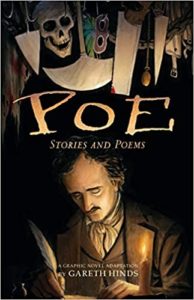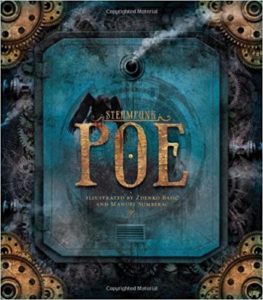Shared national narratives matter. They cohere generations around a belief system: that the country’s general purpose is, in a word, good. Such binary choices that reduce complex entities to either “good” or “bad” are often fraught with circumstance. But sometimes the circumstances ease the choice. Take the Cold War. Of course one could easily pierce the relative goodness and badness of the U.S. and the Soviet Union with specific examples. But if this same one had to choose between a liberal democracy that provides opportunities to correct injustices, or a totalitarian regime that summarily expends individuals for the regime’s sake, we should think it an easy choice.
Still, Americans in the mid-20th century actually needed to see, not just believe, that the Soviet experiment would eventually fail. Jeff Shesol, author of Mercury Rising: John Glenn, John Kennedy and the New Battleground of the Cold War, frames it more narrowly: Americans needed to see their country win the space race.
The term “existential threat” is probably overused. But an American at the end of 1957 could be forgiven for claiming it. That year, the Soviets launched both Sputnik and American dread. If the Soviets could launch a satellite into orbit, what else could they do? It didn’t help that Soviet Premier Nikita Khrushchev, in his usual haranguing style, said that they were producing ICBMs “like sausages.” Inside the Pentagon and the Eisenhower administration, there wasn’t much regard for the R-7 Semyorka rocket the Soviets used to launch Sputnik. They thought it crude, good for only lifting heavy payload and not easily directed.
Nevertheless, questions of what the American’s were doing in space persisted, greatly annoying Eisenhower. At a news conference, he played down Sputnik. “They have put one small ball in the air.” Much later Eisenhower would nonchalantly say to reporters, “It’s not necessary to be first in everything.” While true, it’s hardly a sentiment to rally around. And as Shesol notes, many Americans thought being second in space meant being second in everything.
Under intense pressure, Eisenhower agreed to a space program. He believed that it had to be non-militaristic so as to make it less prone to the military-industrial complex. So he and Senator Lyndon Johnson, over drinks at the White House, finalized a bill that created NASA.
What followed was Project Mercury, the United States’ first man-in-space program. Shesol says it began as “a program in search of a purpose—beyond the obvious aim of ensuring that the man in question was American and not Russian.” There was already talk of landing a man on the moon, yet Eisenhower had little patience with such a fanciful thing. Plus, his Science Advisory Committee reported that the whole thoroughfare was an “emotional compulsion.” Eisenhower ultimately slashed Mercury’s budget.
James Webb, NASA’s administrator, hoped to have better luck with President Kennedy as his campaign rhetoric intimated some support. But when the Soviets sent cosmonaut Yuri Gagarin into orbit, there was growing worry that the U.S. would not catch up to, let alone surpass, the Soviets. Besides, Kennedy had more earthly concerns: Berlin, Cuba, Southeast Asia, and domestic civil rights abuses. In a meeting with Kennedy, Webb showed him a model of the Mercury spacecraft. Kennedy dismissed it, said it looked like something you would pick up at a toy store.
Interesting as this political history is, the book really thrums when it focuses on America’s first astronauts, the Mercury Seven, test pilots all. Because the space program was in its nascent stages, their roles were not clearly defined. The astronauts wanted spacecraft designs to allow for consistent pilot control. The engineers, however, sought to minimize the astronauts’ role in flight, seeing them more as backups for when the automatic functions failed.
NASA administrators had the Seven on a constant travel and training schedule. At times, they stood united, pushing back against such things as having to pay for their meals when on official trips. When they were in danger of losing their flight pay because they were unable to log enough flight hours, they went to the press to have their demands met. But they were a competitive group otherwise, settling into two factions. There was John Glenn (with Scott Carpenter, “Glenn’s only true friend among the astronauts”) and Alan Shepard (who had the rest).
It was an unexpected delight to read Glenn’s backstory. He grew up dreaming of flight, eventually earning his pilot’s license in college. As a Marine in World War II, he was assigned to fly transport planes. For Glenn, this would not do and lobbied for combat. It was granted and he more than relished it. He knew he was not invincible, but his confidence as a pilot was undoubtedly secure.
He continued in the Korean War, this time flying jets. “Glenn seemed to hurl himself at targets, flying too fast and too low through sheets of anti-aircraft fire, blasting his 20-millimeter cannons.” One of his wingmen, Ted Williams (yes, that Ted Williams, of the Boston Red Sox), would later say of Glenn: “The man is crazy.” Williams could be prickly, but he also had high praise for Glenn: “Absolutely fearless. The best I ever saw. It was an honor to fly with him.”
At war’s end (and disappointed that it ended), Glenn became a test pilot, where he earned the reputation as someone who engaged in what servicemen called “sniveling.” Glenn would go on to explain what this meant: It was “going around and getting what you want to get even if you’re not slated to get it. There’s nothing wrong with it—and I was superb at it.” After he flew the first supersonic transcontinental flight (a mission he devised), he gained some fame, even appearing on “Name That Tune.”
It wasn’t just the relative aw-shucks ease in which Glenn appeared before the cameras that irked most of the other astronauts. It was more that Glenn was not like them. Drinking and womanizing were common. Glenn partook in neither. (Glenn never knew life without his wife Annie. They grew up together, and Glenn would often shield her from situations where she would need to speak, her stutter having been rated at 80 percent.) Glenn saw their libertine activities as a liability to the program. They often saw him as a scold. (Glenn believed in the notion of astronaut-as-role-model. Some members of the press tried to apply this model to Shepard, inferring that he was from humble origins and a churchgoer. In reality he grew up wealthy and openly stated that he didn’t belong to any church.)
When NASA asked the astronauts to rank who should be assigned to the first mission, Glenn knew he was in trouble. Most of the country thought it would be Glenn. Many in NASA, however, believed that Shepard was the more talented pilot. The 1-2-3 mission order would be Shepard, Gus Grissom, and then Glenn. NASA announced that while a choice had been made, the astronaut’s name would be released later. Through all of this, a livid Glenn had to stand and smile.
Shepard’s successful suborbital flight bolstered the nation’s confidence in the program. But NASA was not satisfied with suborbital missions. They thought it akin to a circus act: throw a man up in the air and then watch him come down. Grissom went on his own suborbital flight, but to little fanfare.
It was actually fortuitous that Glenn was third in line. For now, the more powerful Atlas rocket was in use, ready to carry a capsule into orbit. Shesol builds the intensity by taking us through the numerous scrubbed launches that delayed Glenn’s liftoff, the issues either mechanical or weather related. When we reach February 20, 1962, we know this is the day. We know exactly how this turns out; but Shesol takes care to have us in the moment, on edge. Glenn rides the elevator to the top of the rocket and works his way into the Mercury capsule. It’s so small, in fact, Glenn says, “You don’t get in it, you put it on.”
There was a growing national sense that this was it, an American was about to orbit the earth. People lined up along the beaches near Cape Canaveral, Florida to witness the launch. It was becoming real for Glenn, too. He was strapped in, and it felt as though the booster below him “was alive. It screeched and growled. When he shifted back and forth, it moved, just slightly.”
While in the capsule, Glenn was able to speak to Annie via telephone one final time. Dangerous missions had long standing in their shared life together, but this one was spectacularly dangerous. He ended the conversation with the same sign-off he had used since World War II. “Remember, I’m just going down to the corner store to get a pack of gum.” Even though she was frightened, Annie repeated her part of the routine. “Well, don’t take too long.”
Americans were gathering around televisions and transistor radios. Schools would soon close for the day. Then the engines fired and the rocket ascended, arrowing and splitting the air into sound waves. And as long as it kept thrusting, there was a feeling that we were going to make it. In Grand Central Station a thousand or so people (eventually swelling to ten thousand) watched the big screen; someone in the crowd found the breath to yell, “Go, go, go!” President Kennedy, watching a TV in the White House, heard Walter Cronkite scream on-air, “Go, baby!”
Over the next five hours, Americans listened and waited. (Shesol points out that in 1962, 78 percent of Americans had not traveled by air.) Glenn completed his planned three orbits and returned safely. Within the same decade, Americans would behold the success of new rocketry and space exploration, culminating in the mighty Saturn V rocket and the moon landing. The technological achievements, along with the stunning visuals of space travel, were grand enough to speak for themselves. Yet, throughout—and even though it wasn’t always at the forefront of American consciousness—the space race was seen as a metaphor for the Cold War.
The Soviet Union collapsed and the Mercury astronauts are gone. If you tour the launch sites at the Cape today, you’ll see plenty of buildings marked “SpaceX,” not “NASA.” But you can still feel the history, a sense of believing in a shared endeavor. This is part of our narrative.
Find in Catalog


 Poe: Stories and Poems, a Graphic Novel Adaptation, by Gareth Hinds
Poe: Stories and Poems, a Graphic Novel Adaptation, by Gareth Hinds